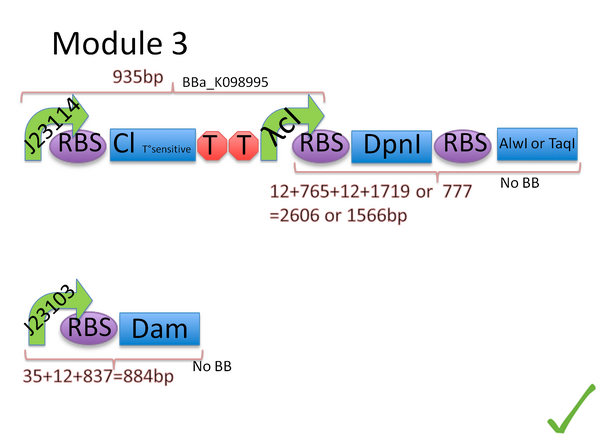IGEM:IMPERIAL/2009/Encapsulation/Parts/Module3
Inducible promoter
Trigger
Problem
As the encapsulated cell is impermeable/not very receptive to solutes, we need physical means of induction
Possible Solutions
This could be solved in the following ways:
- light
- temperature
- nutrient deprivation.
For temperature, it could be regulated using the following mechanisms:
- Temperature sensitive lambda cI repressor
- RNA thermometer
- Cold sensor hdbB
Our solution
Using the temperature sensitive lambda cI repressor
BBa_K098995 by Harvard 2008
(on our 2009 distribution plate)
http://partsregistry.org/Part:BBa_K098995
This is a thermosensitive cI (clts) inducible system driven by a strong promoter.
For strong promoter J23114
Variant RFP= 256 au
BBa_R0051 is a standard lambda cI regulated promoter.
This system is leaky so we have decided to make our own or obtain a commercially available thermoinducicble system.
Restriction Enzymes-Methylase system
Restriction Enzymes
Dpn1
- blunt cutter
- recognises GATC
Taq1
- staggered cutter
- recognises TCGA
Methylase
Dam Methylase
Weak constitutive promoter
To maintain a basal level of methylation
Using BBa_J23103
variant RFP= 17 au
A weak promoter in the popular constitutive promoter family.
http://partsregistry.org/Part:BBa_J23103
Overall design
The schematic below shows the overall design of the M3 system:

